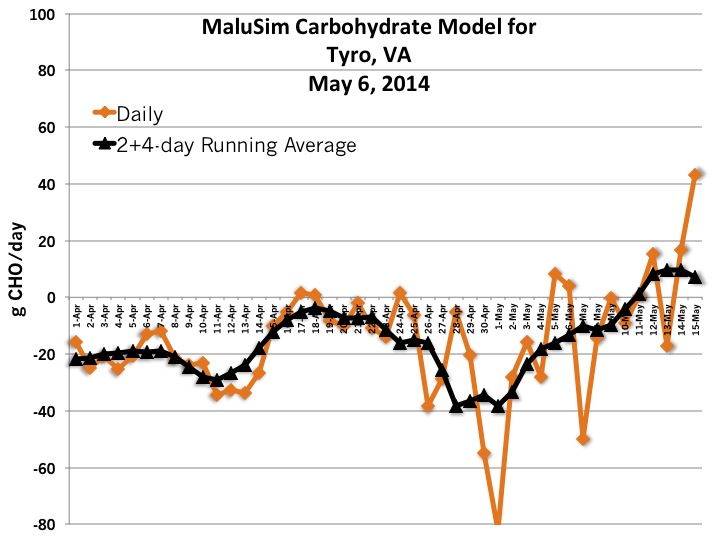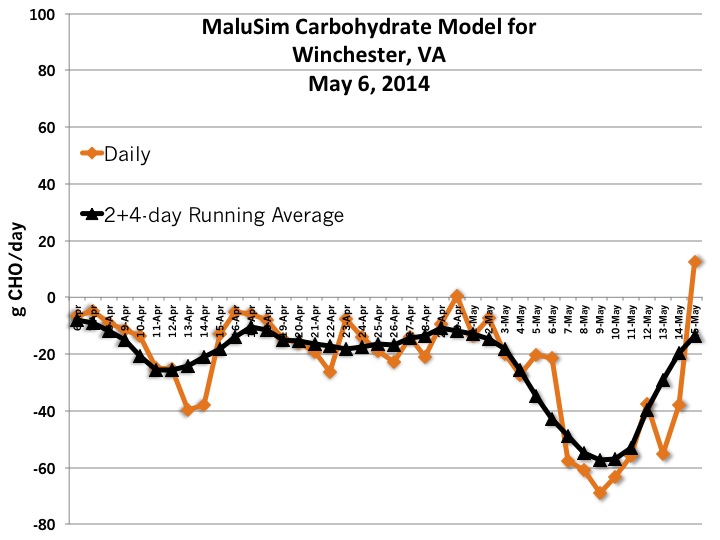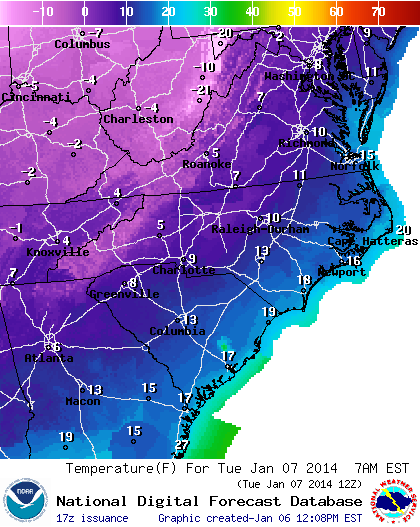Fruitlets in the Central Virginia area are quickly sizing up (reports are in the 12-18 mm range), and growers have only a couple-few more days to use NAA and 6-BA products for thinning. In the Winchester area fruitlets are just entering the 10 mm thinning window, but with the hot weather over the past few days it is likely that fruit will be growing at a rapid pace (greater than 0.5 mm per day).

Table 1. Fruitlet sizes at the Alson H. Smith, Jr.AREC in Winchester.
| Fruit diameter (mm) | |
| Cultivar | 12-May |
| Empire | 10.4 |
| Fuji | 7.0 |
| Gala | 8.7 |
| Goldens | 8.0 |
| Idared | 8.1 |
| Pink Lady | 9.2 |
| Red Delicious | 8.0 |
| York | 7.9 |
In Central Virginia, the MaluSim model is showing a moderate carbohydrate deficit for the next three days, and then the carbohydrates balance shows positive values through the weekend. A large deficit that was predicted to occur over the past weekend never materialized, largely because there was more sunlight than forecasted. Additionally, as the expanding leaf surface transitions from being a carbohydrate sink to a carbohydrate source the model will continue to show a positive carbohydrate balance. Growers should target blocks that require more aggressive thinning on Tuesday and Wednesday at normal or slightly reduced rates (unless trying to thin larger fruit) and then target blocks with lighter starting crop loads towards the end of the week.
In Winchester, bud break was 6 days later than in Central Virginia, meaning that many leaves are still sinks for carbohydrates and more severe deficits occured over the past few days. However, as the Winchester area enters into the thinning window, less severe carbohydrate deficits are predicted to occur. Growers should start thinning their earliest blooming cultivars on Tuesday evening or Wednesday and then move to more lightly cropped blocks towards the end of the week and over the weekend.
Click below to download the full pdf reports:






